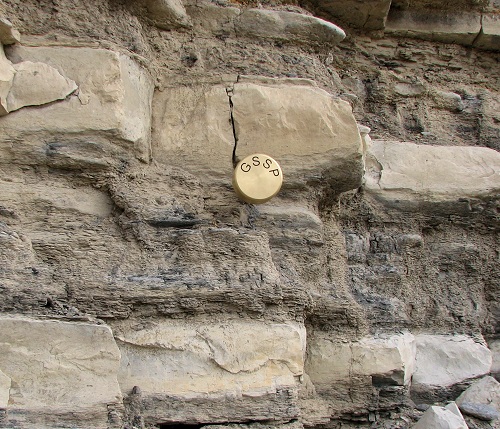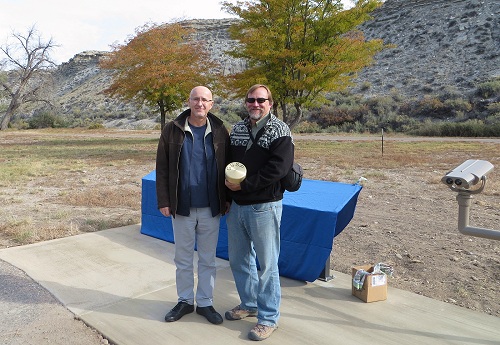
For something that is supposed to keep track of 4 billion years of history, the geologic time scale is quite a fuzzy and slippery yardstick. After two centuries of careful research and argumentation, the world’s geologists have only recently adopted a system to literally nail down the different time periods taught in geology school. Last week that project took another slow step forward as a “golden spike” was officially driven into a precise spot on the ground near Pueblo, Colorado, a benchmark for the beginning of the Turonian Age.
The public knows a few things about the geologic past. They know that “the Jurassic” is part of the time of the dinosaurs, for instance. That’s a good starting point. The Jurassic Period began with Alexander von Humboldt in 1795, who recognized that the set of rocks neatly displayed in the Jura Mountains (between the Rhine and Rhone rivers) had their own distinctive set of fossils. Later on, workers took the Jura as a template for a particular period of ancient time that could be assigned a place in line, along with the Cambrian, Silurian and so forth in a chain of time units. There was always the promise that this work would add up to something definitive and seamless.
Putting all the world’s rocks in order is a task almost beyond metaphor. Students are told that deciphering the geologic record is like reassembling a book whose pages have been torn apart, crumpled, burned and scattered. It’s worse than that: it’s like assembling a dozen giant jigsaw puzzles from crumpled, burned pieces that have been mixed in a pile after throwing away half of them, including their original boxes with the pictures on top.
Geologists have done that job, most of it. The first geologic time units were based purely on oceanic fossils, which was fine as far as it went, but other rocks have fossils of land-dwellers and most rocks don’t have any fossils at all. Lava and granite and the rest of the igneous rocks were mostly left out until precise chemical methods based on isotopes were slowly perfected in the 20th century. With other rocks, their magnetic fields are the only information that can be used for dating. With still others, the only tool in the kit is dumb basic stratigraphy—the geometry of what rocks lie above and what below. Think of each of these sets of rocks as one of those jigsaw puzzles.
By a few decades ago, the rocks dated by all these different methods were well enough assembled that it paid to coordinate their stories more carefully, starting with the time scale itself. That’s when the International Commission on Stratigraphy set up the system of Global Stratotype Sections and Points, or GSSPs. These are actual places where the exact boundary of a particular time unit is set down in stone, just as bronze benchmarks are cemented in various places for land surveying.

